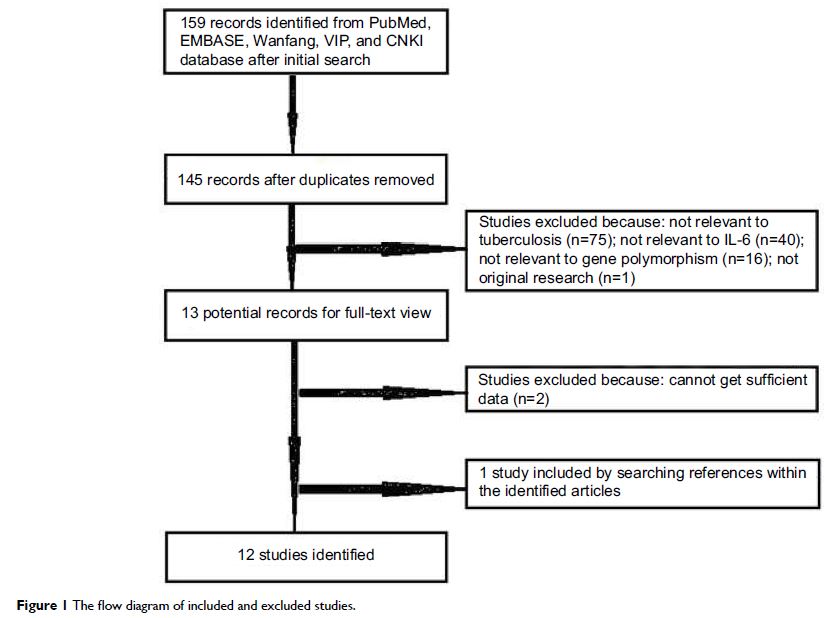108985
论文已发表
注册即可获取德孚的最新动态
IF 收录期刊
- 3.4 Breast Cancer (Dove Med Press)
- 3.2 Clin Epidemiol
- 2.6 Cancer Manag Res
- 2.9 Infect Drug Resist
- 3.7 Clin Interv Aging
- 5.1 Drug Des Dev Ther
- 3.1 Int J Chronic Obstr
- 6.6 Int J Nanomed
- 2.6 Int J Women's Health
- 2.9 Neuropsych Dis Treat
- 2.8 OncoTargets Ther
- 2.0 Patient Prefer Adher
- 2.2 Ther Clin Risk Manag
- 2.5 J Pain Res
- 3.0 Diabet Metab Synd Ob
- 3.2 Psychol Res Behav Ma
- 3.4 Nat Sci Sleep
- 1.8 Pharmgenomics Pers Med
- 2.0 Risk Manag Healthc Policy
- 4.1 J Inflamm Res
- 2.0 Int J Gen Med
- 3.4 J Hepatocell Carcinoma
- 3.0 J Asthma Allergy
- 2.2 Clin Cosmet Investig Dermatol
- 2.4 J Multidiscip Healthc

IL-6 基因多态性与结核风险之间的关联:一项荟萃分析
Authors Wang H, Pang C, Zeng N, Wan C, Shen Y, Wen F
Received 19 June 2017
Accepted for publication 6 October 2017
Published 27 November 2017 Volume 2017:10 Pages 445—454
DOI https://doi.org/10.2147/IDR.S144296
Checked for plagiarism Yes
Review by Single-blind
Peer reviewers approved by Dr Colin Mak
Peer reviewer comments 2
Editor who approved publication: Dr Joachim Wink
Background: The gene polymorphism of interleukin-6 (IL-6 ) has been shown to be
implicated in tuberculosis susceptibility in many studies, but with conflicting
results. This study aimed to provide more accurate estimation of the
relationship between IL-6 gene
polymorphism and tuberculosis risk through a meta-analysis
Method: A literature search was performed in PubMed,
EMBASE, and other databases. Data were retrieved, and pooled odds ratio (OR)
with 95% CI were calculated. Statistical analyses were performed by using STATA
12.0.
Results: Twelve publications with 2635 cases and 3049
controls were included. The pooled analysis demonstrated significant evidence
of association between IL-6 (-174G/C)
and low risk of tuberculosis in dominant model (CC+GC vs GG: OR =0.693, 95% CI
0.581–0.826, p <0.001). Subgroup analysis got
similar results for IL-6 (-174G/C)
in Asians and Latinos, but the significance did not exist in Caucasians. IL-6 (-572C/G)
polymorphism was also associated with low risk of tuberculosis in dominant
model (CC+GC vs GG: OR =0.719, 95% CI 0.577–0.896, p =0.003). No publication bias was
detected in either of the polymorphisms.
Conclusion: In summary, IL-6 -572 C/G
polymorphism may be associated with a decreased risk of tuberculosis, and C
allele is the protective factor against tuberculosis for IL-6 -174G/C among Asians and
Latinos, but not in Caucasian population.
Keywords: interleukin-6 , rs1800795,
rs1800796, TB
